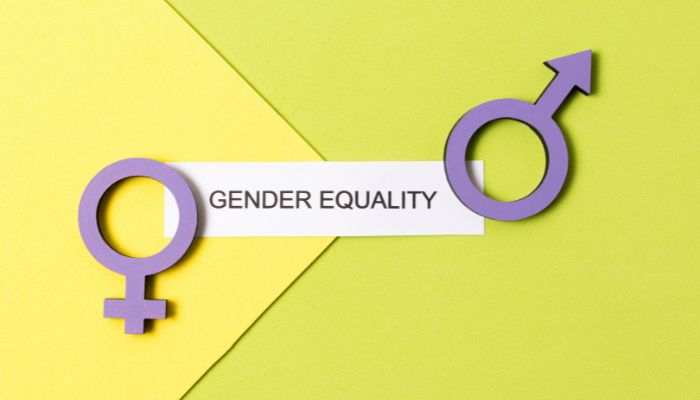Gender stereotypes in the workplace are among the key factors that hinder employee performance and impede the overall organisational growth. These stereotypes manifest in various forms, including biased promotions, unequal recognition, inequitable compensation, and even racial discrimination. Addressing such issues is essential to safeguard employee well-being and protect the organisation’s reputation.
According to the World Economic Forum’s Global Gender Gap Report, approximately 68.8% of the global gender gap has been closed as of 2025. However, the remaining 31.2% is projected to take at least 123 years to achieve full parity. In light of this, it becomes the primary responsibility of leadership and HR teams, who play a crucial role in shaping organisational behaviour, to proactively identify and address gender stereotypes, thereby fostering a work culture rooted in equity and gender diversity.
Prevalent Gender Stereotypes in the Workplace
- Bias in Top Management Roles: Women are often perceived as emotionally vulnerable and less competent, while men are viewed as decisive and authoritative, traits traditionally associated with leadership. Although the global female workforce participation rate stood at 41.2% in 2024, only 28.1% of top management positions were held by women. Despite women outperforming men in tertiary education, this advancement has not translated into equal representation in leadership roles.
- Bias in Perceived Capabilities: Women often bear the burden of having to prove their competencies more rigorously than their male counterparts, who are frequently presumed to be inherently capable and assertive. Such an environment contributes to diminished self-confidence and increased self-doubt among women employees. As a consequence, in countries such as India, Iran, and Egypt, women often earn less than one-third of what men earn, reflecting disparities in wages.
- Challenges After Career Breaks: Women are 55.2% more likely than men to take career breaks primarily due to parenting responsibilities. However, upon re-entering the workforce, they face substantial barriers, including fewer interview opportunities, higher rejection rates, biased assessments by hiring managers, lower salary offers, and adverse outcomes from AI-driven resume screening tools. According to Aon’s 2024 Voice of Women study, 75% of working mothers in India experience a “maternity penalty” upon returning to work. Additionally, 40% report receiving lower compensation, while 50% face biased perceptions regarding their professional capabilities.
- Racial Discrimination: Racial biases manifest in the workplace in various forms- unequal treatment by managers, wage disparities, and discriminatory practices based on appearance. In the UK, 72% of Black British and 57% of Asian British employees reported experiencing microaggressions from their managers. Within the STEM sector, 57% of Black professionals highlighted the lack of effective initiatives to promote racial inclusion and diversity.
- Stereotypes Faced by Men: Men in caregiving roles often confront stereotypes portraying them as less competent, less empathetic, and morally inferior compared to women. Such biases discourage male participation in caregiving professions and disregard their parental responsibilities.
Overcoming Gender Bias at Work
- Organise Awareness Programs: Conduct regular workshops and training sessions to promote counter-stereotyping techniques that enable employees to identify and correct biases in the workplace. Examples include prioritising female leaders in STEM fields and associating minority groups with positive traits.
- Implement Gender-Neutral Hiring: Develop job descriptions using gender-neutral language (e.g., “they/them” instead of “he/she”). Apply blind screening methods by removing identifiers such as name, age, and gender, focusing solely on skills and experience. Use standardised interview questions and skill-based assessments for all candidates, regardless of gender. Ensure gender diversity principles are integrated into talent sourcing strategies and reflected in the creation of recruitment panels.
- Regulate Pay Transparency: Publish salary bands in job postings to eliminate confusion. Conduct routine pay equity audits across all components of compensation to identify disparities. Establish a gender-neutral compensation framework that aligns with market standards and compliance requirements. Provide training for managers on equitable pay practices and educate employees on effective salary negotiation strategies.
- Establish Metrics for Gender Parity: Define measurable goals for achieving gender equity, particularly for leadership and HR teams, and incorporate them into performance evaluations. This approach will support the timely implementation of gender parity initiatives across the organisation and promote long-term growth.
- Offer Equal Parental Leave: Introduce a flexible and equitable parental leave policy for all genders to mitigate caregiving-related stereotypes and promote shared responsibilities among employees.
To build a truly inclusive workplace, organisations must actively dismantle gender stereotypes that limit opportunity and reinforce inequality. From hiring practices and compensation to leadership representation and parental policies, meaningful change requires commitment at all levels. Addressing both the overt and subtle forms of bias will enhance employee well-being and strengthen organisational performance, innovation, and long-term growth.
Frequently Asked Questions
1. What are gender stereotypes in the workplace?
2. How do gender stereotypes affect women's career growth?
3. Are men also impacted by gender stereotypes at work?
4. What hiring practices can help eliminate gender bias?
5. What steps can HR take to promote gender equity?






